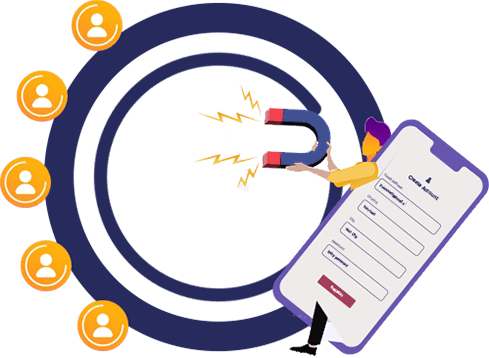A Few Important Lead-Generation Strategies to Know

Generating leads is crucial for any business looking to grow. Lead generation refers to the strategies and processes used to identify and attract new potential customers. Without new leads coming to the top of your sales funnel, your business won’t be able to grow revenue or expand its customer base.
Lead generation helps drive growth in a few key ways:
– It builds a pipeline of potential customers to feed your sales team. The larger this pipeline, the more sales opportunities they have to convert.
– It expands brand awareness and positions your company as an authority in your industry. Thought leadership content and social media build familiarity and trust with your brand.
– It nurtures relationships over time through ongoing communication. Some leads may not be ready to buy yet, but lead nurturing via email and social media brings them back around when they are ready.
– It provides insight into customer needs and interests through data collection. Lead generation helps identify trends and patterns in customer behavior that can inform future marketing and product decisions.
In short, a steady flow of new leads is the fuel that keeps your sales engine running. Mastering lead generation and maintaining a full funnel is critical for any growth-oriented business.
Content Marketing
Content marketing focuses on creating valuable, relevant, and consistent content to attract and convert targeted audience segments into leads. Rather than directly promoting products or services, content marketing aims to build awareness, trust, and loyalty through informative and engaging content.
Some effective types of content marketing assets include:
- Blogs – Well-written blog posts that provide useful information related to your industry can attract organic search traffic. Blog content also allows you to showcase expertise.
- EBooks – More in-depth than blog posts, eBooks allow you to explore topics extensively while offering readers valuable takeaways. You can create an engaging ebook as an interactive digital flipbook having a built-in lead capture form with Enhanc.
- Videos – From quick explainer videos to detailed webinars, video content helps convey messages creatively while increasing chances of social shares. Videos boost engagement when embedded on pages.
- Infographics – Visual learners appreciate infographics that present information in a graphically appealing way. Infographics tend to get shared widely on social media.
- Newsletters – Regular newsletters that provide curated industry news and company updates can nurture leads. Newsletters help build relationships with prospects over time.
Effective content provides valuable information focused on helping the reader, rather than direct promotions. Developing truly engaging content on topics your audience cares about takes time and effort, but can pay off with qualified leads.
Search Engine Optimization
Search engine optimization (SEO) involves optimizing your website and content to improve your organic search rankings. The higher your pages rank in search engines like Google for relevant queries, the more traffic those rankings will drive to your site. There are several important SEO strategies to focus on:
- On-page optimization – This includes optimizing page titles, URLs, headings, meta descriptions, image alt text, content, etc. Proper on-page SEO makes it easier for search engines to understand your pages and rank them higher.
- Off-page optimization – Building high-quality backlinks from other sites to your pages helps improve domain authority and page authority, boosting rankings. Guest posting, partnerships, directories, and other tactics can build relevant backlinks.
- Technical site optimization – Ensuring your site is mobile-friendly, fast-loading, and avoids crawling errors enhances SEO. Proper site architecture, internal linking, and technical optimizations also help.
- Local SEO – For local businesses, optimizing for local SEO results where searchers add a location to their query can drive foot traffic. Tactics include local content, schema markup, GMB listing optimization, and local link building.
Proper SEO implementation requires an ongoing process of optimizing, monitoring, and improving over time. However driving more organic traffic from search engines can significantly boost brand awareness, site traffic, and lead generation. SEO is a smart investment for long-term results.
Paid Ads
Paid advertising is an important part of any lead-generation strategy. With paid ads, you can target your ideal demographics and reach people who are already interested in your products or services. Three major platforms for paid ads are Facebook, Google, and LinkedIn.
Facebook Ads
Facebook ads allow you to target users based on location, age, interests, behaviors, and more. You can create ads to reach people who are likely to convert into leads and customers. Make sure to analyze the demographics and interests of your current leads and customers. Then you can create lookalike audiences and tailor ads directly to people with similar attributes.
Google Ads
Google Ads, including search and display network campaigns, are ideal for reaching people when they are searching for products and solutions. You can target keywords and topics that relate to your business to put your ads in front of people who are actively searching. Make sure to research relevant keywords around your products, services, and industry.
LinkedIn Ads
LinkedIn ads are highly targeted based on job title, industry, company, skills, and more. Running sponsored content on LinkedIn can help you engage professional audiences and generate leads. Focus on targeting titles and roles you typically sell to at companies that can use your offerings. Personalize your messages by referencing their company or role.
Email Marketing
Email marketing is one of the most effective channels for lead generation. By building an email list and nurturing leads through email campaigns, you can generate highly qualified leads over time.
The first step is to offer compelling opt-in incentives like ebooks, webinars, and free trials to encourage visitors to sign up for your email list. Use pop-ups, sticky bars, and landing pages with lead magnets to capture emails.
Once you have an email list, you can nurture leads by sending targeted, personalized campaigns. For example, send a series of automated onboarding emails to welcome and educate new subscribers. Or create email sequences that provide useful content to leads based on their interests and where they are in the buyer’s journey.
Segment your list so you can tailor content to specific lead groups. For instance, send promotional emails to cold leads and educational content to warmer leads. Use split testing to optimize your email campaigns.
Also leverage email for contests, live events, surveys, and other interactive content to generate leads. For example, invite subscribers to a free webinar or ebook download in exchange for contact info.
Analyze metrics like open rate, clickthrough rate, and unsubscribe rate to refine your email campaigns. With strategic email marketing, you can turn cold leads into qualified sales opportunities over time.
Social Media
Social media platforms like Facebook, Instagram, Twitter, LinkedIn, and others offer both organic and paid opportunities to generate leads.
On the organic side, creating sharable content, engaging with followers through comments and messages, and leveraging user-generated content can help raise awareness and drive traffic back to your site. Make sure to include strong calls to action in your posts and bios to convert visitors into leads.
Paid social ads allow you to target your messaging and offers to very specific demographics and buyer personas. Run A/B tests on your ads to optimize targeting, messaging, and creatives for the highest click-through and conversion rates. Leverage lead generation objectives and integrations with your CRM to capture leads directly from paid social campaigns.
The key is developing an omnichannel social media strategy that uses organic, paid, and user-generated content working together to attract and nurture new leads. Activate and engage your followers across multiple platforms with content tailored to each platform’s audience.
Lead Magnets
Lead magnets are free offers used to entice people to subscribe to your email list. They provide immediate value to potential customers in exchange for their contact information. Some effective types of lead magnets include:
- EBooks – Create an in-depth, 10-30 page guide related to your industry. Offer valuable insights, how-tos, or case studies that prospects will find useful. Ensure your ebook provides enough perceived value to motivate subscriptions.
- Coupons – Offer a percent or dollar amount off your products/services. Time-limited coupons can create urgency. Make sure to drive coupon users to convert to loyal customers.
The key to great lead magnets is providing free, useful resources that require an email subscription to access. Focus on your customer’s needs and pain points. Offer lead magnets as a starting point to build relationships. Then continue nurturing leads through helpful email campaigns into delighted, lifelong customers.
